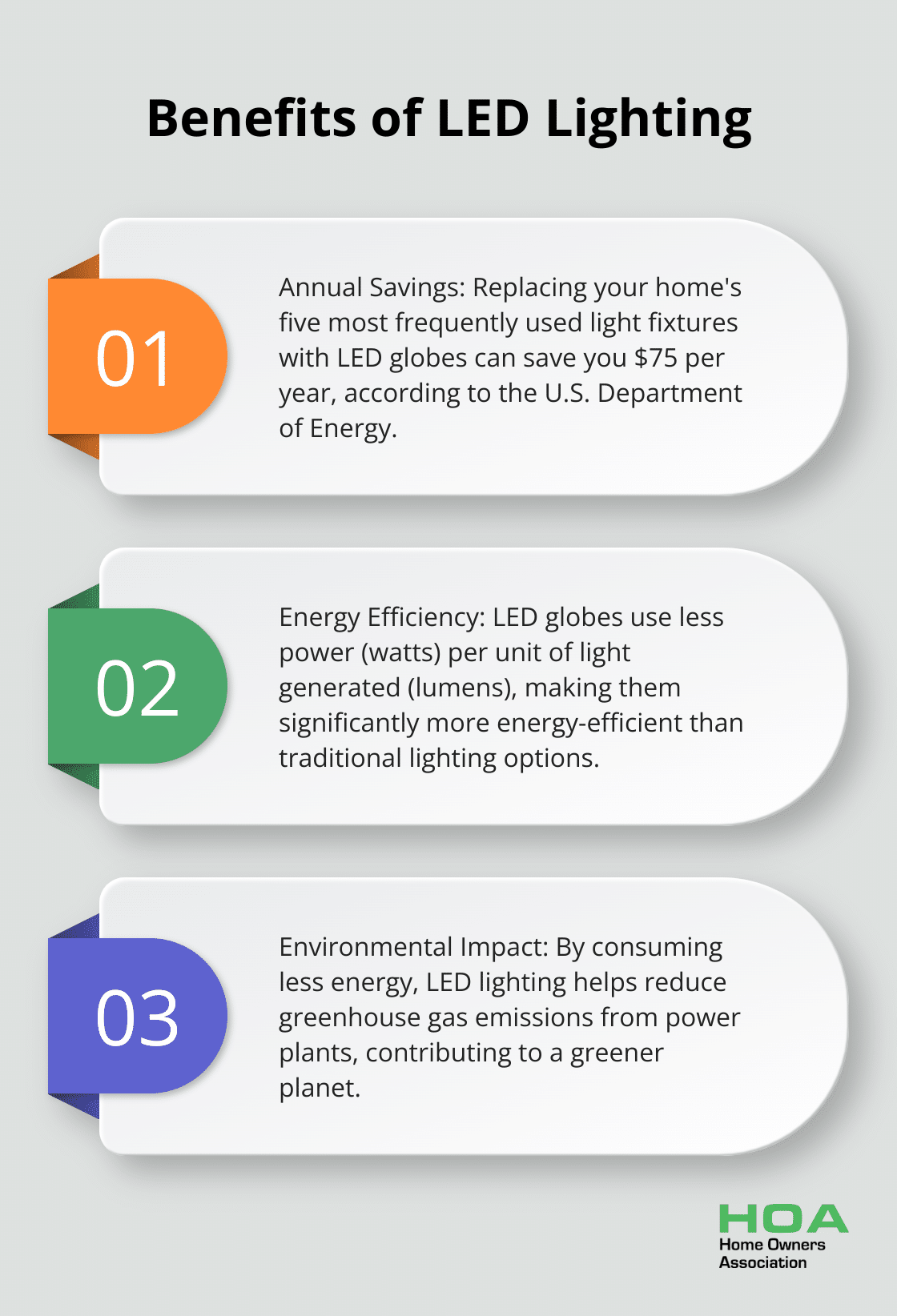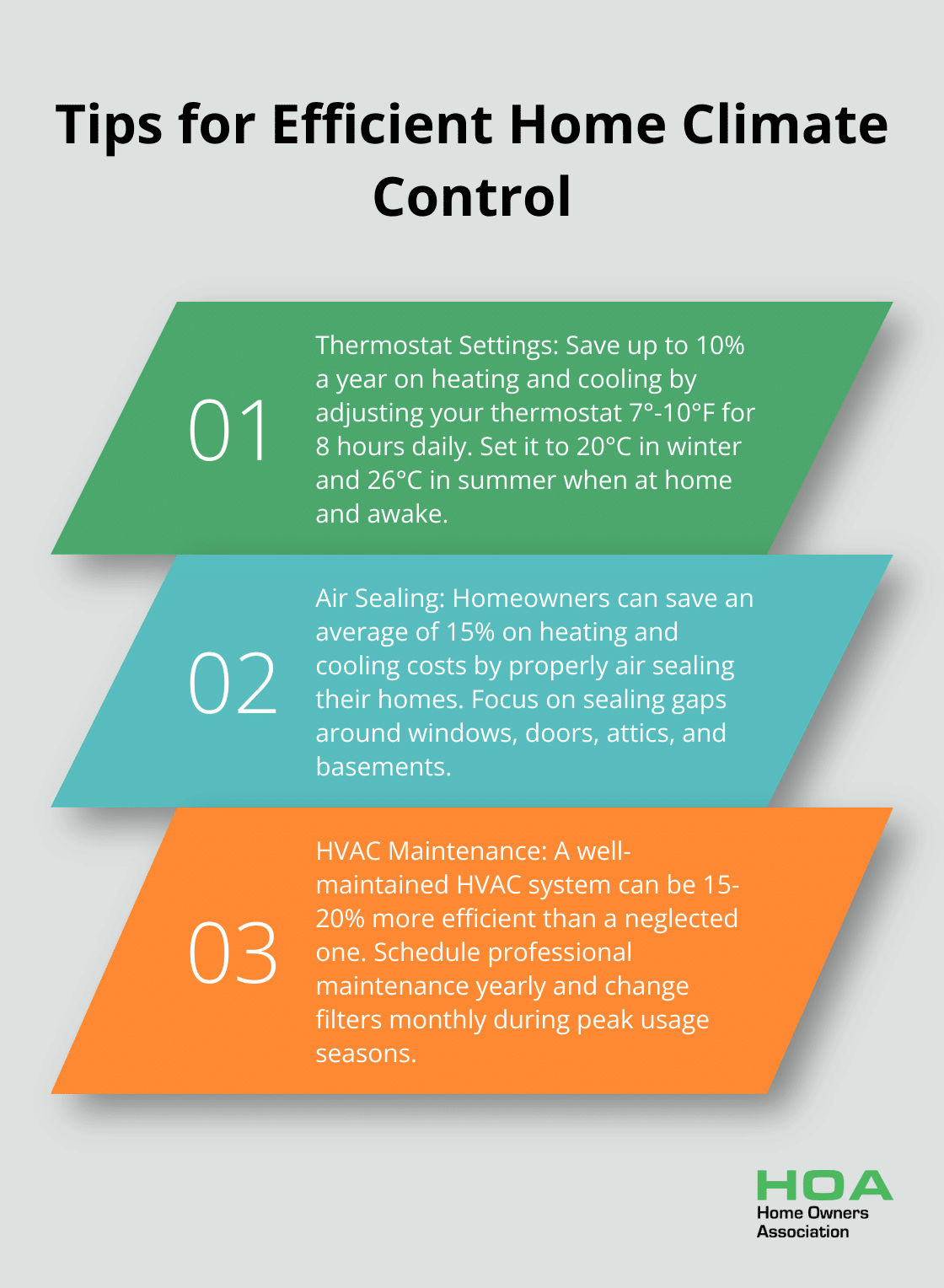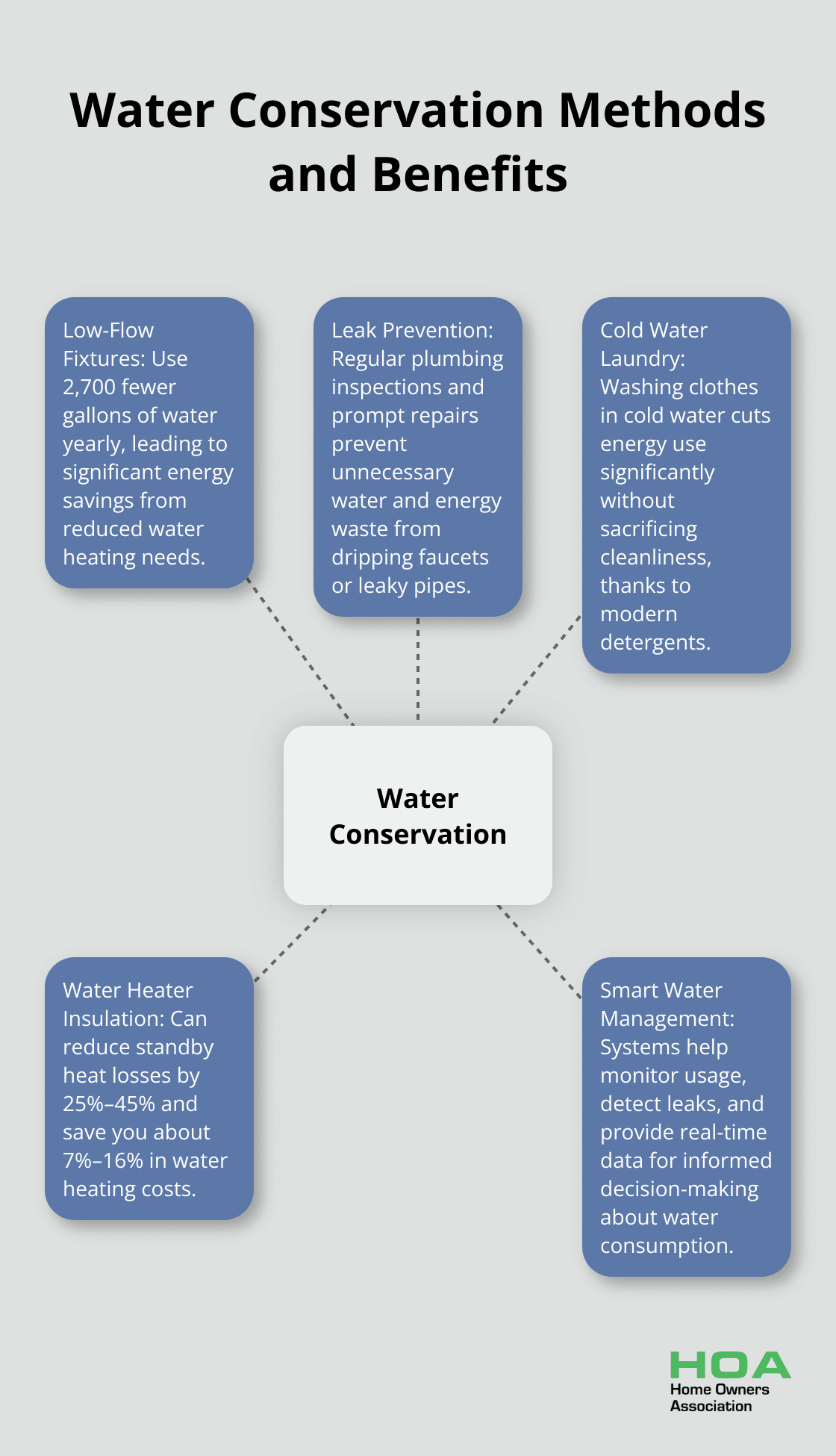
At Home Owners Association, we understand the importance of energy efficiency in modern households. Saving energy at home not only reduces utility bills but also contributes to a greener planet.
In this blog post, we’ll share practical tips and tricks to help you conserve energy without sacrificing comfort. From lighting solutions to smart heating strategies, these simple changes can make a significant impact on your energy consumption and wallet.
Bright Ideas for Energy-Efficient Lighting
Lighting consumes a significant portion of household energy. Simple changes in lighting can lead to substantial energy savings. Let’s explore effective strategies to illuminate your home while reducing your energy footprint.
The LED Revolution
LED globes transform energy-efficient lighting. LED globes use less power (watts) per unit of light generated (lumens). LEDs help reduce greenhouse gas emissions from power plants and lower electric bills. The U.S. Department of Energy reports that replacing your home’s five most frequently used light fixtures with LED globes can save you $75 per year. The initial cost might be higher, but the long-term savings prove significant.

Smart Controls for Smarter Savings
Smart lighting controls further reduce energy consumption. Motion sensors ensure lights turn on only when needed (particularly useful in less frequently used areas like hallways or outdoor spaces). Timers automate your lighting schedule, turning lights on and off at preset times. Energy saving light globes help lower your electricity bills and improve your carbon footprint without changing how well lit your home is.
Harnessing Natural Light
Natural light reduces reliance on artificial lighting at no cost. Keep windows clean and unobstructed to allow more sunlight in. Consider installing skylights or solar tubes in darker areas of your home. A study by the Heschong Mahone Group found that workers in offices with more natural light were 15% more productive, suggesting similar benefits for home environments.
The Power of Paint
Wall colours impact lighting needs significantly. Lighter colours reflect more light, reducing the need for artificial lighting. A room painted in a light colour can appear up to 30% brighter than the same room in a dark shade, potentially allowing you to use lower wattage globes or fewer fixtures.
Maintenance Matters
Regular maintenance of your lighting fixtures ensures optimal performance. Clean globes and fixtures regularly to maximise light output. Dust and dirt can reduce a globe’s light output by up to 30%. Replace old or flickering globes promptly to maintain consistent lighting and energy efficiency.
These lighting strategies can significantly reduce your energy consumption without compromising on the quality of light in your home. Every small change adds up to substantial savings over time. Now, let’s move on to explore how smart heating and cooling strategies can further enhance your home’s energy efficiency.
Mastering Home Climate Control
The Thermostat Revolution
Programmable thermostats transform home energy management. These devices set different temperatures for various times of the day, automatically adjusting to your schedule. You can save as much as 10% a year on heating and cooling by simply turning your thermostat back 7°-10°F for 8 hours a day from its normal setting. For optimal savings, set your thermostat to 20°C in winter and 26°C in summer when you’re at home and awake. Adjust it by 4-5 degrees when you’re asleep or away.

Sealing the Deal on Energy Efficiency
Air leaks act as silent energy thieves. A thorough home inspection reveals gaps around windows, doors, and other openings that let conditioned air escape. EPA estimates that homeowners can save an average of 15% on heating and cooling costs (or an average of 11% on total energy costs) by air sealing their homes. Use weatherstripping for movable components like doors and caulk for stationary cracks and gaps. Focus on attics and basements, where significant air leakage often occurs.
The Cool Benefits of Ceiling Fans
Ceiling fans play a crucial role in energy-saving strategies. While they don’t lower the temperature, they create a wind-chill effect that can make a room feel up to 4°C cooler. This allows you to raise your thermostat setting by about 4°C without affecting comfort. Adjust your fan’s direction seasonally – counterclockwise in summer for a cooling effect, and clockwise in winter to distribute warm air.
HVAC Maintenance: A Little Care Goes a Long Way
Regular maintenance of your heating, ventilation, and air conditioning (HVAC) system is essential for energy efficiency. A well-maintained HVAC system can be 15-20% more efficient than a neglected one. Schedule professional maintenance at least once a year, and change filters monthly during peak usage seasons. Clean filters can lower your air conditioner’s energy consumption by 5-15%.
These strategies lead to substantial energy savings without compromising comfort. Small changes in how you heat and cool your home can add up to significant reductions in energy use and costs over time. Now, let’s explore how water conservation methods can further enhance your home’s energy efficiency.
Water Conservation: A Key to Energy Savings
Water conservation plays a vital role in reducing energy consumption in your home. The link between water and energy might not be immediately apparent, but it’s significant. Every drop of water you save translates to energy savings, as less energy is required to heat, pump, and treat water.
Low-Flow Fixtures: Small Changes, Big Impact
Low-flow showerheads and faucet aerators offer a simple yet effective way to reduce water consumption. These devices can cut water usage significantly without compromising water pressure or comfort. With these newer shower heads, the average family uses 2,700 fewer gallons of water yearly. This translates to significant energy savings, as less water needs to be heated.
The Cost of Leaks
A dripping faucet or leaky pipe wastes a surprising amount of water and energy. Regular plumbing inspections and prompt leak repairs prevent this unnecessary waste.
Cold Water Laundry: A Cool Energy Saver
Cold water laundry cuts energy use significantly. Modern detergents work effectively in cold water, so you don’t sacrifice cleanliness for energy efficiency. Make cold water washes your default setting and reserve hot water for only the dirtiest loads.
Insulate Your Water Heater
Water heater insulation leads to substantial energy savings. Insulating your water heater could reduce standby heat losses by 25%–45% and save you about 7%–16% in water heating costs. This is especially important for older water heaters or those located in unheated areas of your home.
Smart Water Management
Smart water management systems help monitor and control water usage. These systems detect leaks, track consumption patterns, and provide real-time data to help you make informed decisions about your water use. Some advanced systems even integrate with your home automation setup, allowing you to control water usage remotely and set usage limits.

Water conservation techniques are an essential part of sustainable building practices, contributing to both energy-efficient home improvements and lower utility bills.
Final Thoughts
Energy-saving strategies in your home reduce utility costs and minimise environmental impact. Efficient lighting, optimised heating and cooling, and water conservation significantly lower energy consumption. These changes lead to immediate savings and contribute to long-term benefits for your wallet and the planet.
The advantages of energy conservation extend beyond financial savings. You actively participate in the fight against climate change, preserve natural resources, and create a more sustainable future. An energy-efficient home often has improved comfort levels and increased property value (up to 10% in some markets).
We at Home Owners Association encourage you to start implementing these changes today. Every small step to save energy at home counts. You’ll discover that an energy-efficient lifestyle benefits you and sets a positive example for your community and future generations.





